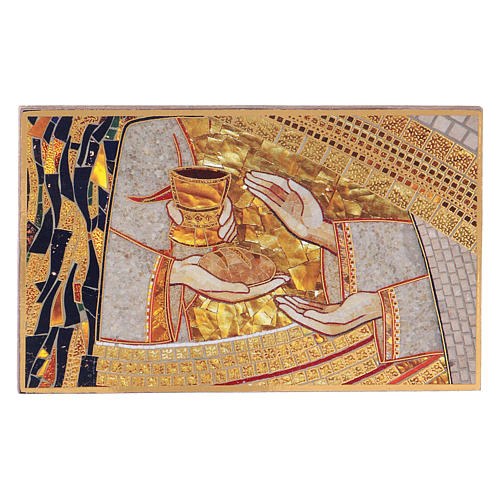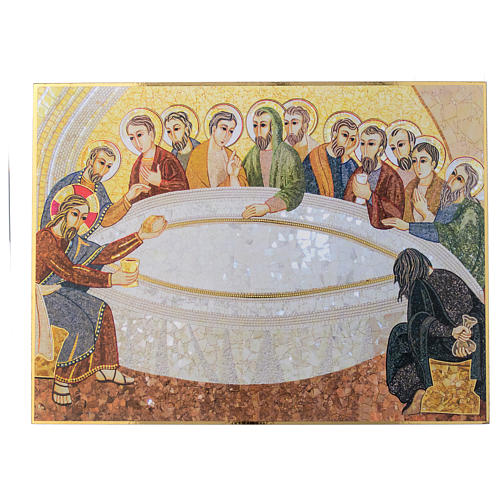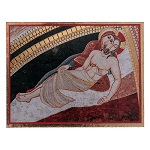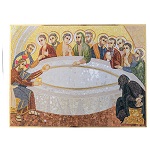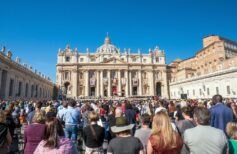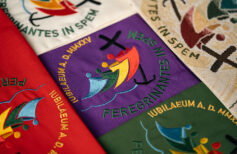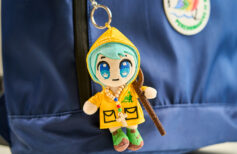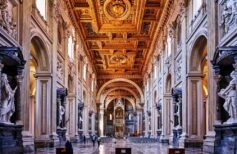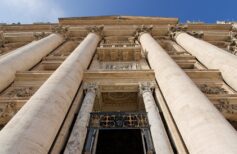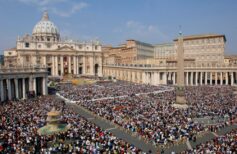The Logo of the extraordinary Jubilee of Mercy was created and designed by an artist and religious man, who was able to instill in it the spirit of mercy that Pope Francis was hoping for this special occasion. Let’s look at it together.
Contents [hide]
What is the Jubilee?
In order to understand what the Jubilee is and its importance since its first introduction in the history of the church, we need to remember first what the Jewish Jubilee was. In the Old Testament, this particular event took place every 50 years.
They chose to leave the lands at rest for one year, in order to make future harvesting stronger and more luxuriant. Furthermore, the year of the Jubilee used to turn into a social event, for it often included acts such as the return of confiscated lands and liberation of slaves. The sound of the yobel, a ram’s horn, declared the beginning of the Jubilee. From this Jewish word comes the word ‘Jubilee‘.
Within the Catholic Church, the Jubilee (or Jubilee Year or Holy Year) took on a whole different meaning. Pope Boniface VIII first announced it in 1300 and lasts a year just like the Jewish one, but in this case, during that year, the Church grants particular indulgences, to let the faithful obtain the remission of temporal punishments through acts of mercy, penitence and charity.
How often is it held?
When the first Jubilee was announced, it was established that the next one would take place 100 years later. Later, the date was set to 50 years. Nowadays, Jubilees take place every 25 years.
The Holy Years so far were 26, with 95 extra ones, announced in the events of particularly hard periods for the Church and the World.
The Jubilee of the year 2000 is remembered with a special solemnity. It celebrated the anniversary of Christ’s coming to Earth, exactly 2000 year after it took place. It was considered a special one also because it was the first Jubilee to cross two millennia.
What do we do during a Jubilee?
The Jubilee begins on Christmas Eve. On that day, all holy doors of the four main cathedrals of Rome (Saint Peter in the Vatican, Saint John Lateran, Santa Maria Maggiore and Saint Paul) are open.
The holy doors are special doors that are kept walled up most of the time, and are opened only in the event of a Jubilee. The first door mentioned during a Jubilee was Saint John Lateran in 1423.
Pope Alexander VI introduced the rite of the opening of the holy door in Saint Peter in 1500.
A special procession accompanies the Pope seated on a chair to the door of Saint Peter.
Here, the Pope hits the door three times with a silver hammer, and while doing so, he sings in Latin: “Open the doors of justice“. Later, a cardinal does the same twice, and the door is opened. The procession goes on beyond the door, the Pope guiding it while holding a cross in his right hand and a lit candle in his left hand.
While this happens in Saint Peter, three cardinals do the same in the three other cathedrals that have holy doors.
From this moment on, many initiatives are organized to celebrate the Jubilee.
At the end of the Holy Year, holy doors are walled up once again.
The Jubilee of Mercy
On March 13 2015, during the sermon of the Litany of Penitence and through the Papal Bull Misericordiae Vultus, Pope Francis announced the Extraordinary Jubilee of Mercy.
The Pope announced it because he wanted to renovate the awareness of being present in the world as instrument and means of God’s Mercy within the Church. The Pontifical Council for Promoting the New Evangelization organized this Jubilee with the aim to promote the extraordinary opening of churches and the invitation to celebrate the sacrament of reconciliation all over the world.
“God who is rich in Mercy” (Ef 2,4) from the letter of Saint Paul to the Ephesians, was the motto of this Jubilee. Another motto for the Jubilee of Mercy was “Merciful like the Father” (Luke 6,36), which invites people to live the concept of mercy following the example of the Father, without judgement nor condemnation, but only with forgiveness and love.
This extraordinary Jubilee began with the opening of the Holy Door in Saint Peter, during the solemn feast of the Immaculate Conception on December 8 2015, and ended on November 16 2016 with the Solemnity of Our Lord Jesus Christ, King of the Universe.
“This is the time of mercy. It is important that the lay faithful live it and bring it into different social environments. Go forth!” were the words the Pope uttered to open the Holy Year.
Pope Francis has always been passionate about the subject of mercy since his election on the papal throne. “Feeling mercy, this word changes everything. His is the best thing we can feel: it changes the world. A little mercy makes the world less cold and more just. We need to understand properly this mercy of God, this merciful Father who is so patient” (Angelus, March 13 2013).
Meaning of the Jubilee of Mercy Logo
The Jesuit Father Marko I. Rupnik designed the logo of the Jubilee of Mercy. The logo represents Jesus, the Good Shepherd, who carries a clearly suffering, tired and lost man on his shoulders. The man is Adam, salvaged from Hell: he is broken, lost, but God welcomes and saves him with love.
It also represents the Father that carries his Son on his shoulders, with all the love only a Father can feel, and while doing so, he saves him from himself and from evil, transforming his life forever. It is a stylized and deeply symbolical representation, and the unrealistic dimension that allows the creator to express emotions, feelings and concepts that go beyond realism.
The iconography represented in the logo of the Jubilee is ancient and has always been important for the Church: the Good Shepherd, who takes the burden of the whole humankind in his endless benevolence and mercy. An even deeper meaning to this logo is Adam and Jesus sharing one eye, their looks are merged.
That way, Christ can see with men’s eyes, and men can see with Christ’s eyes. The divinity reflects himself in humankind and recognizes himself, but most of all, men discover their own renewed, redeemed and saved humanity through the father’s look, which is full of love.
Even shapes and colors have deep meanings in this logo, and they need a deep personal consideration and meditation from us. For example, the almond that encloses the scene is an important image in the ancient iconography, especially during the Middle Age.
The almond recalls the existence of divine and human nature in one only mystic place, both summoned and expressed by Jesus. The shape is made of three concentric ovals, with colors progressively lighter as we move outward. That suggests the movement of Christ who carries humanity out of the darkness on his shoulders, far from sins.
Father Marko I. Rupnik is the author of many paintings and prints. In 1999, with the Atelier of Spiritual Art of the Aletti Center, he completed the mosaic renovation of the Chapel Redemptoris Mater, assigned to him by Pope John Paul II.
On Holyart, you can find paintings and prints by Rupnik, so that you can get to know and appreciate this artist and man of church who was gifted with an extraordinary expressiveness.




